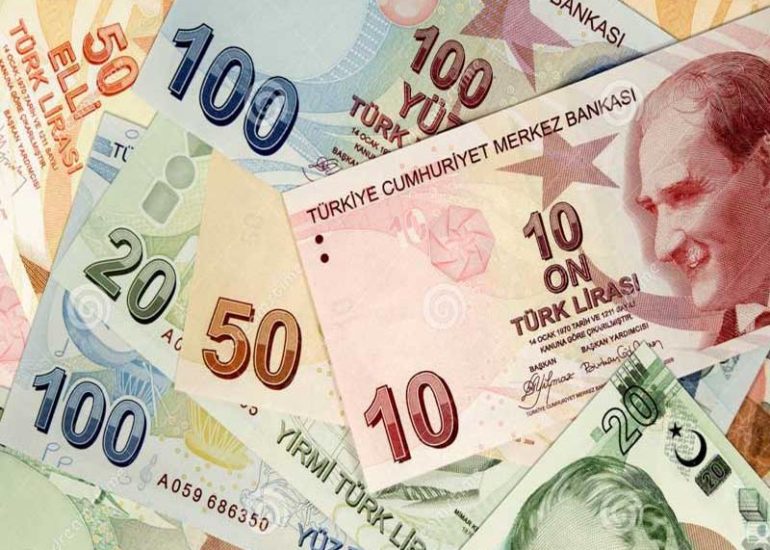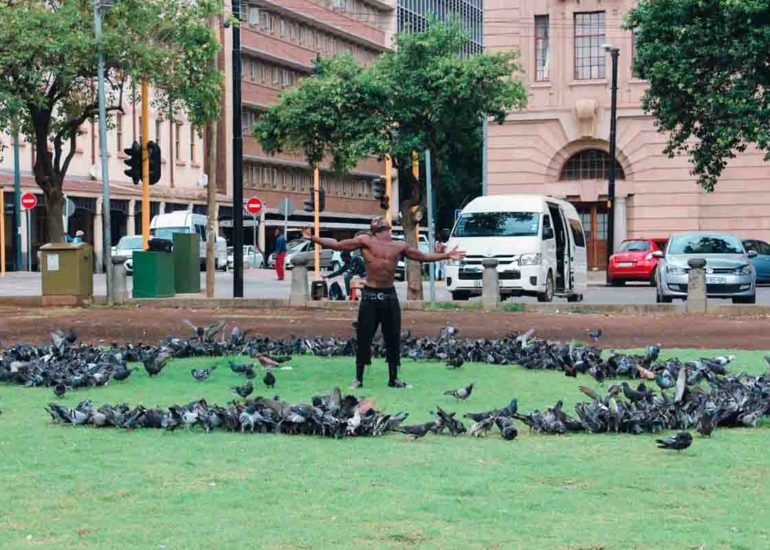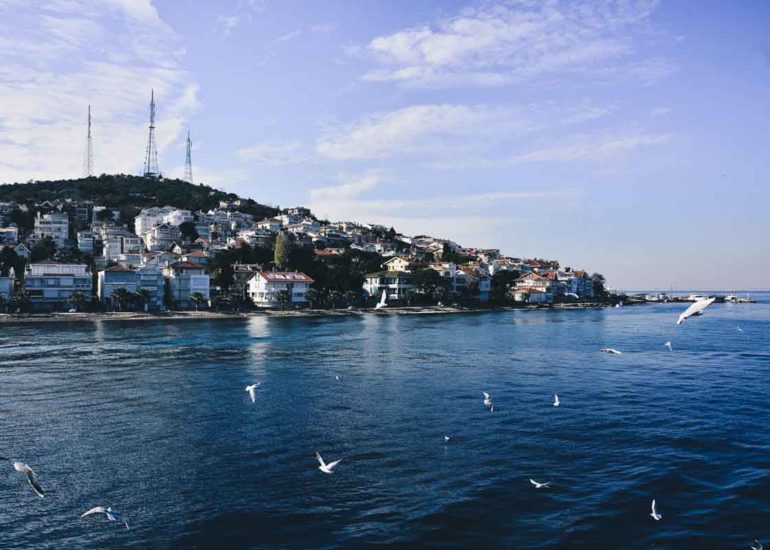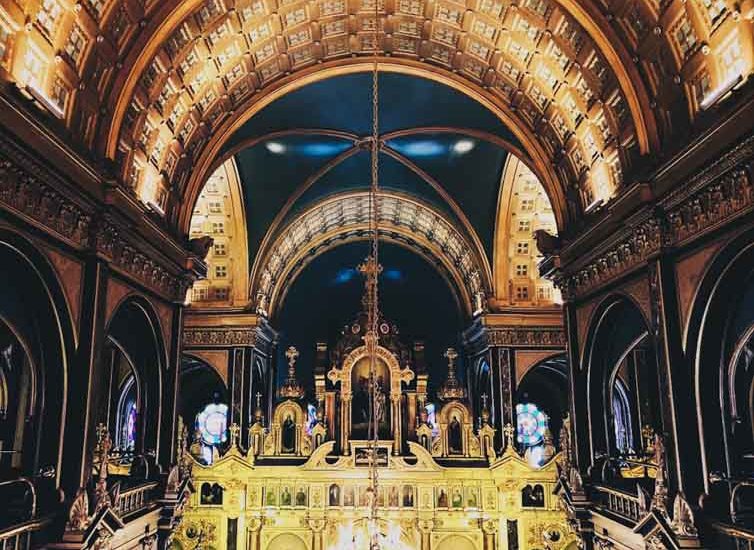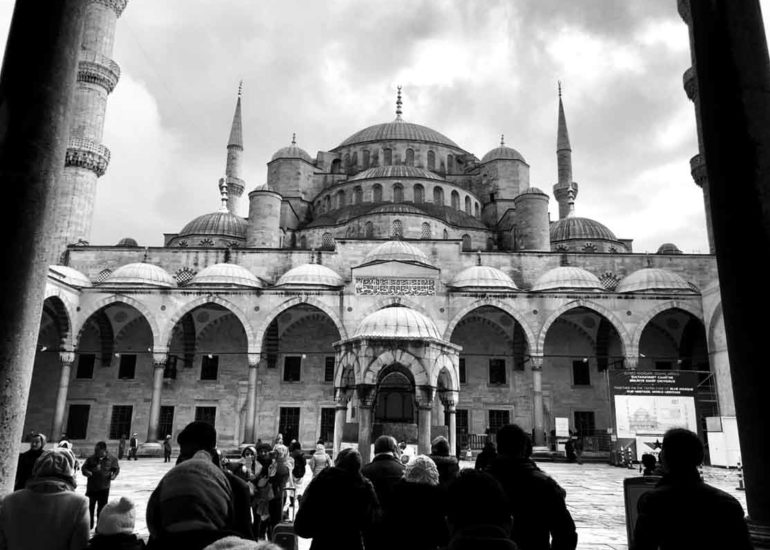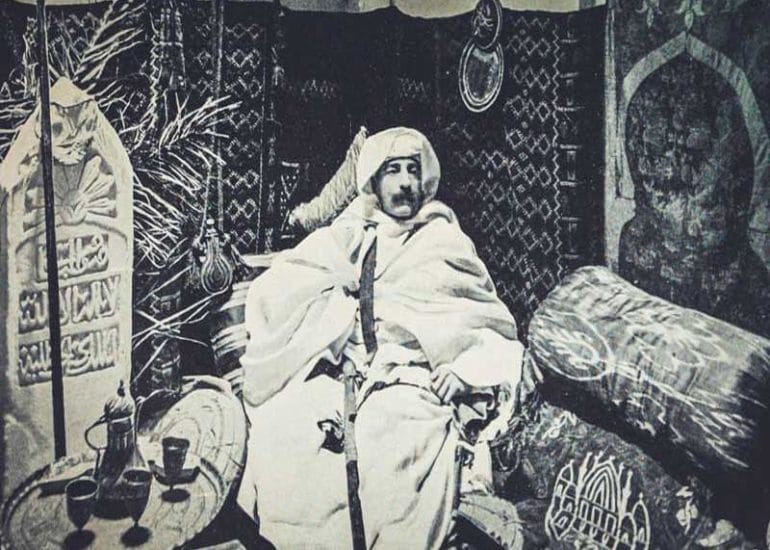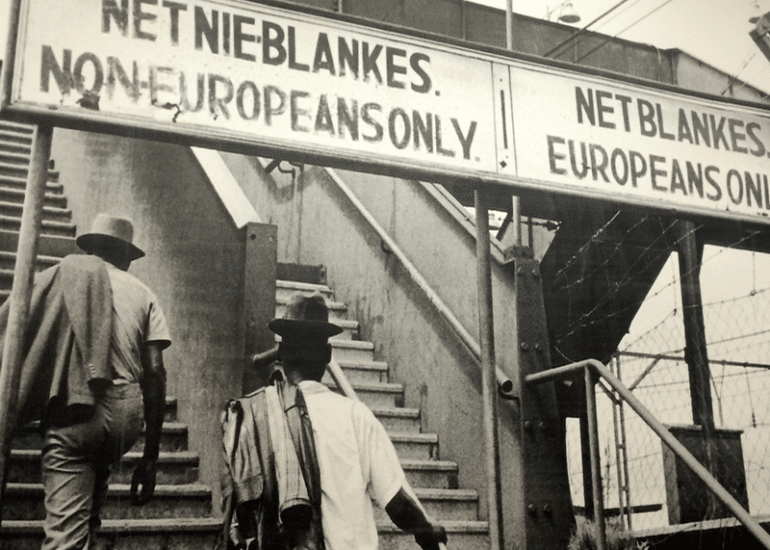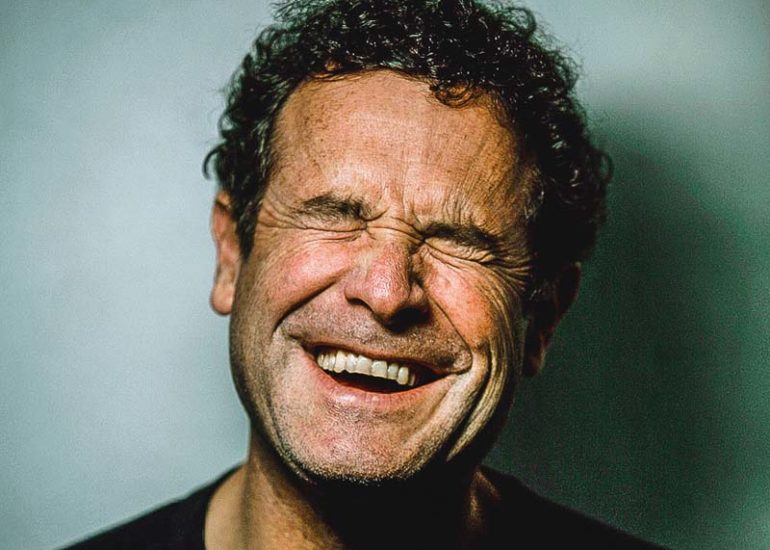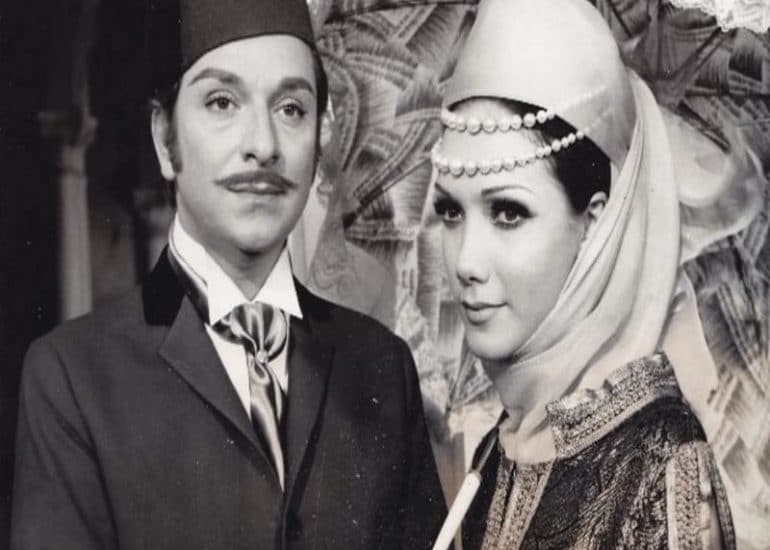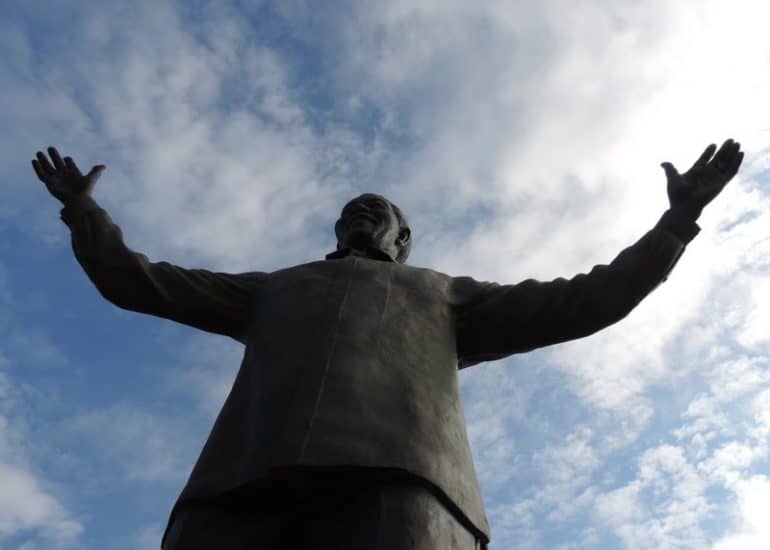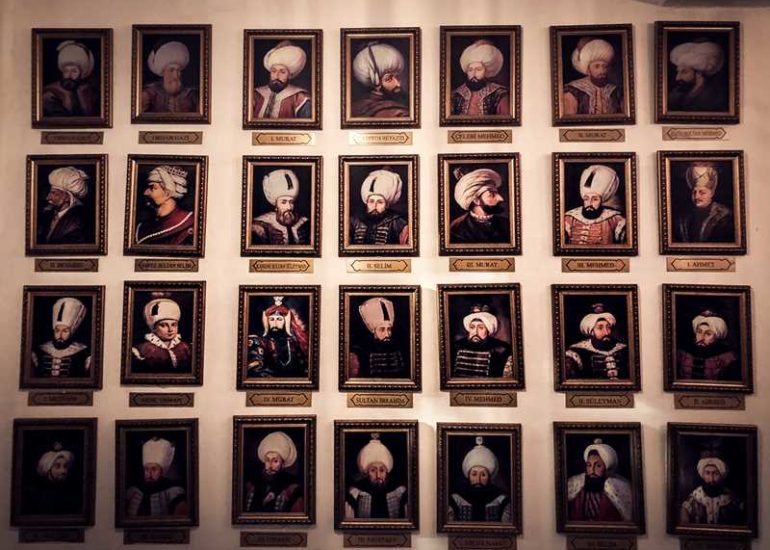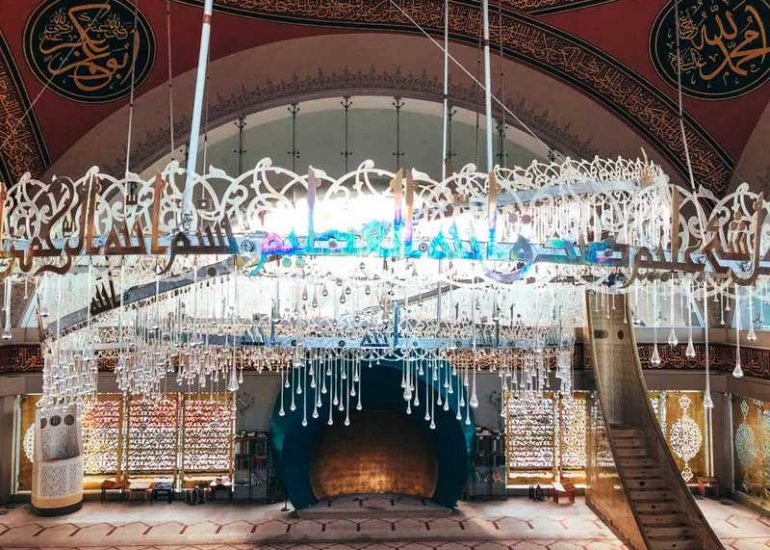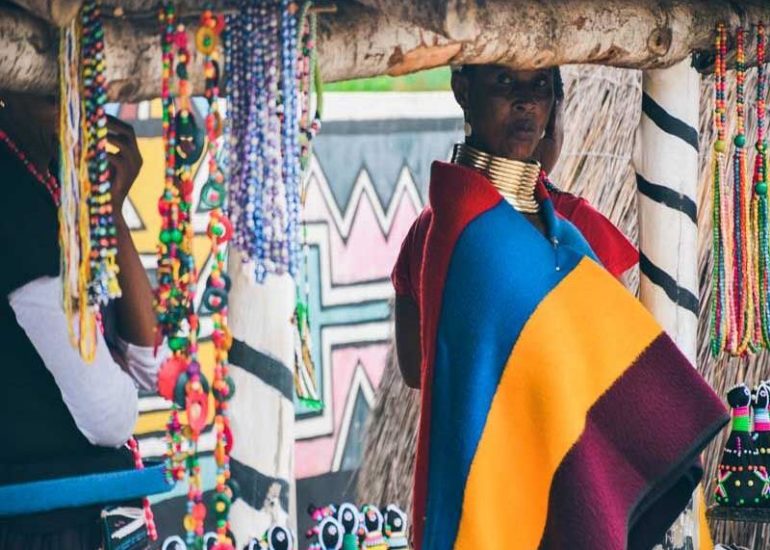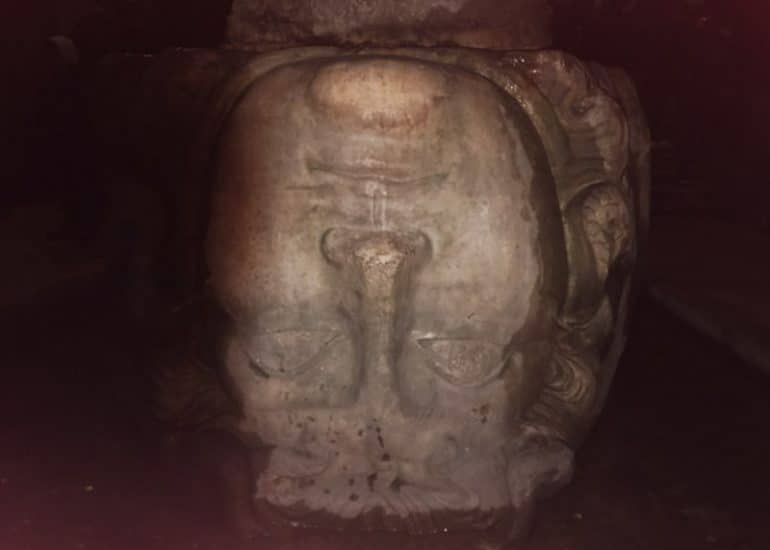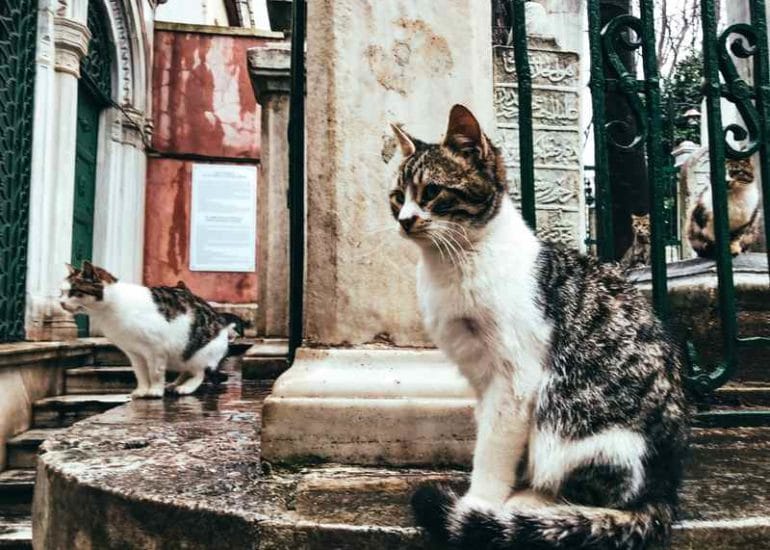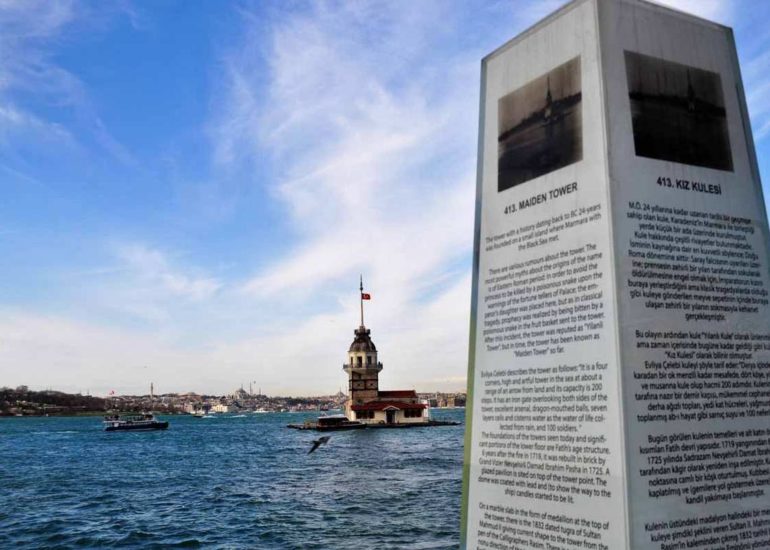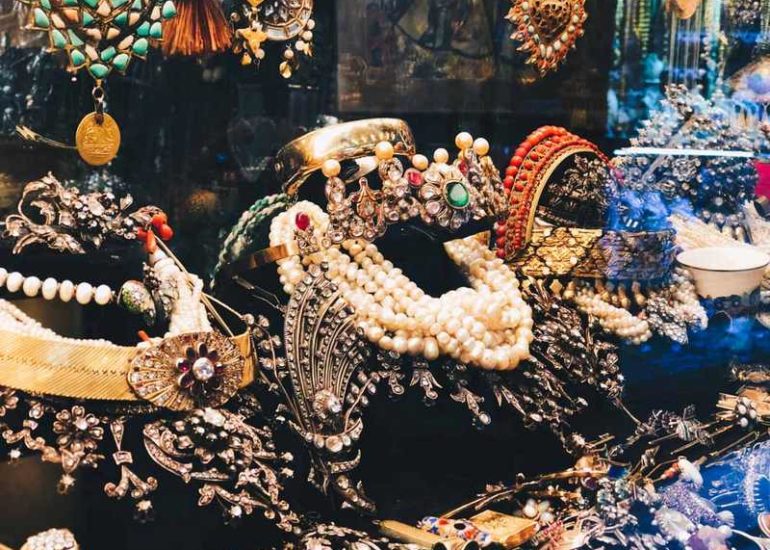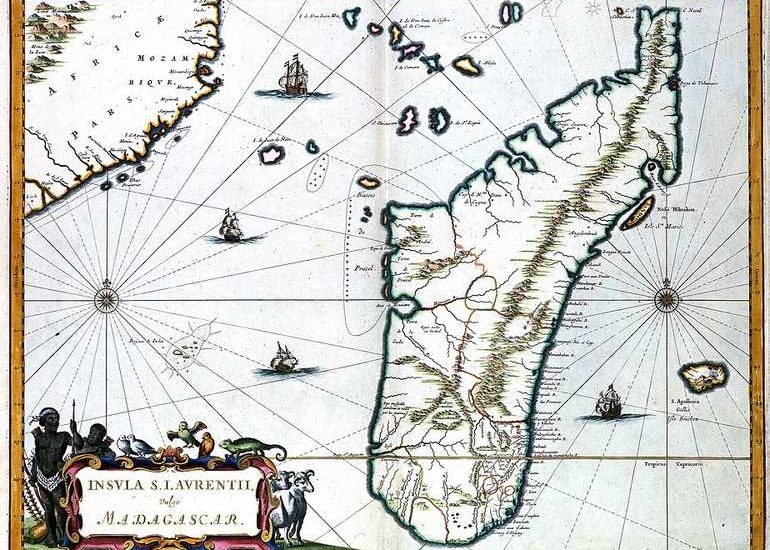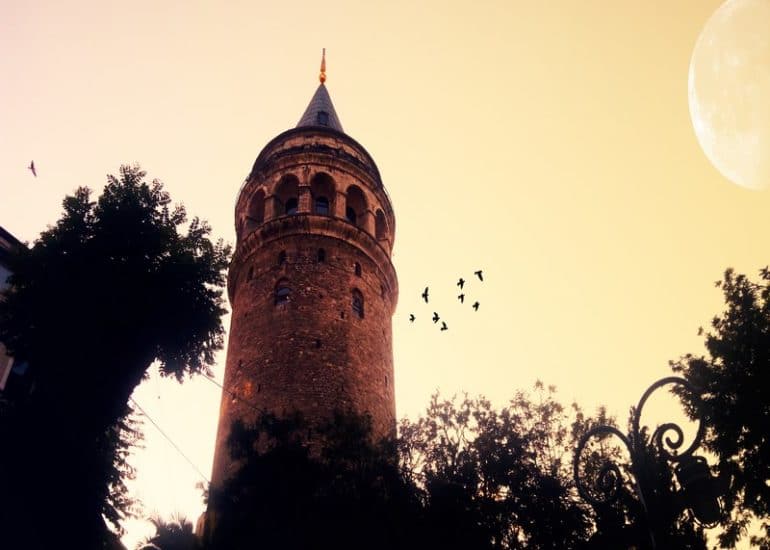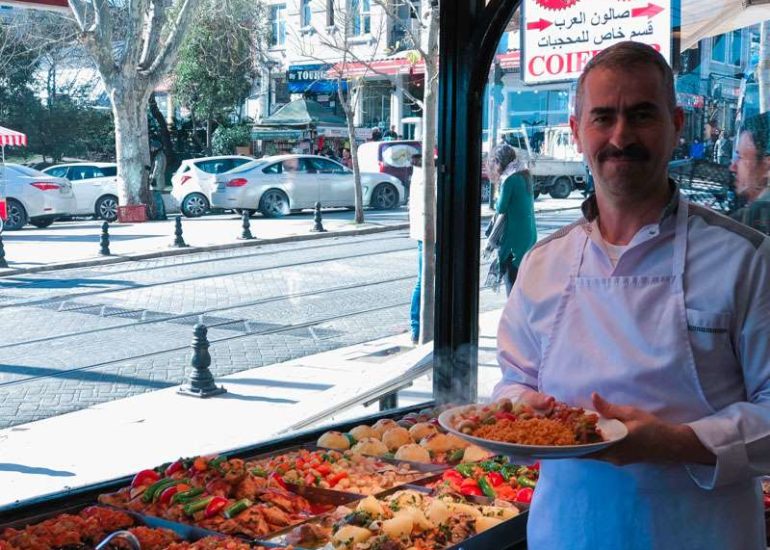The Tokyoïtes and their cat cafes can't hope running the competition, because if there is a place where cat lovers have a reason to be happy, it's in Istanbul.
No need here to pay for a drink, healthy cats are everywhere.
And they teach us a little more about its inhabitants...
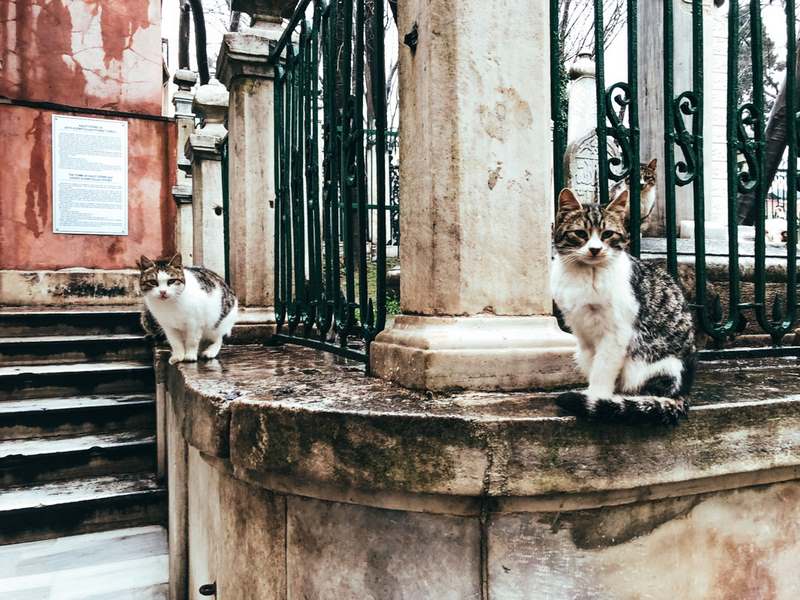
Part of the stambouliotes daily life, they are seen in cemeteries, gardens, near fishermen, shops, on streetcar benches, even in some mosques and especially in the district of Cihangir, “ where the cat is as sacred as the cow in India ”.
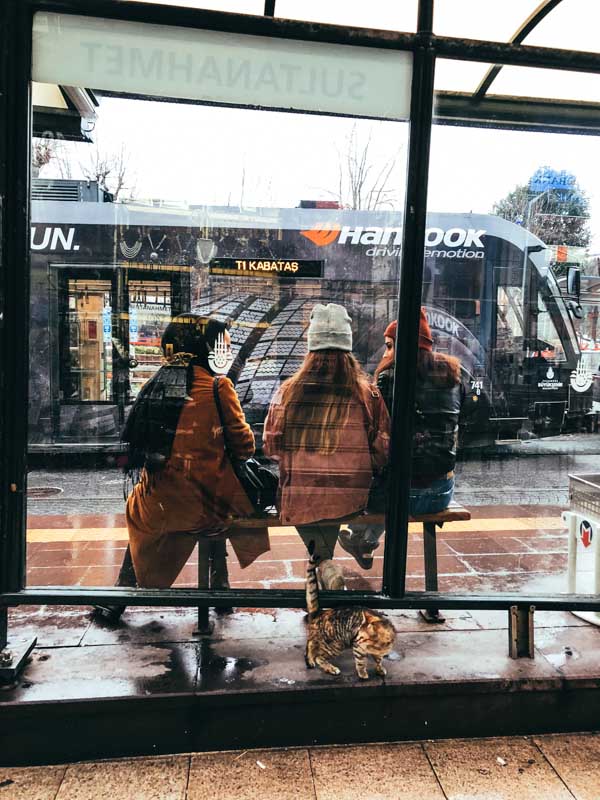
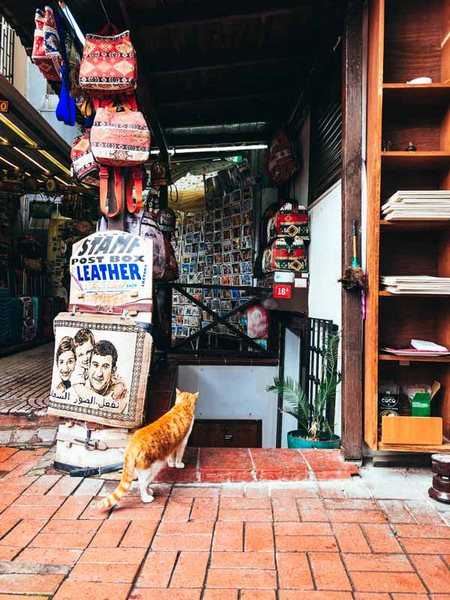
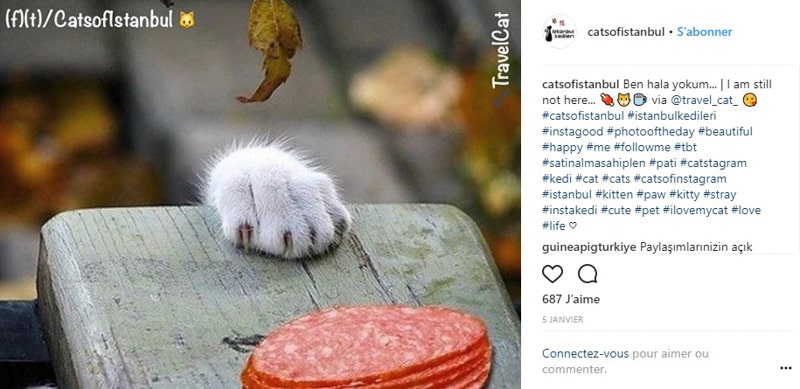
But why so many cats on the street (and so few dogs ?)
The presence of felines in the city can be explained by various factors.
In the era of merchant ships, cats were essential to protect boats from the ravages of rodents. Many sailors made them travel from all breeds – this is how you find even beautiful Norwegian cats on the streets – and some decided (you never impose anything on a cat !) to stay or miss the boat. At the sewer installation in the city, each household had its own cat to hunt rats.
On the other hand, if Islam considers dogs as impure, it has a lot of respect for cats, since Muhammad. The prophet was very attached to his pussy Muezza and indebted to many felines for having saved him from a bite of poisonous snakes. He would even have said these words : « Affection for cats is part of faith. ».
Unlike the dog, the cat doesn't consider man as a god. It has its character, its singularity.
There are more than 125,000 in the city, representing a true heritage shared by the inhabitants, who feed, care for, and protect them from the elements.
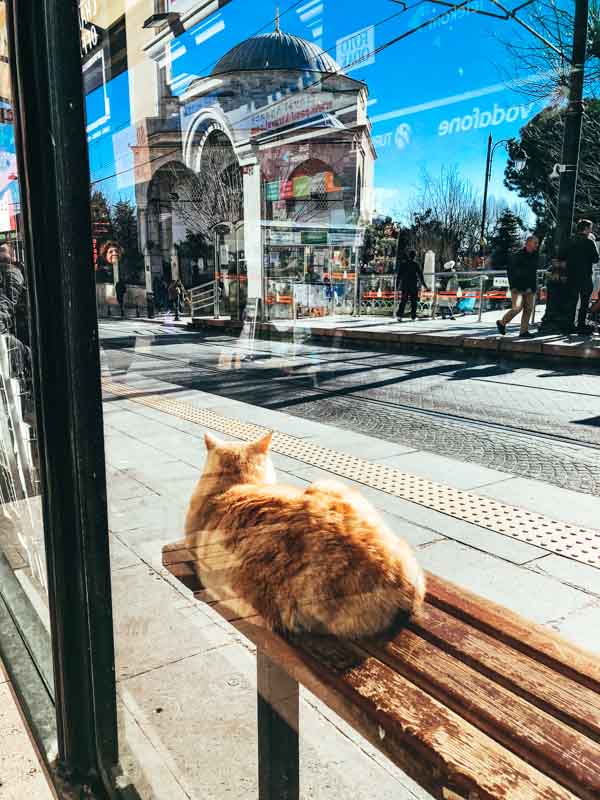

No cat at home, but all a vet account
Owning a pet is not so common in Istanbul, and taking care of those on the streets is part of a common interest, a responsibility.
Cats hunt down pests, brighten up neighbourhoods – sometimes become true figures – and bring tenderness. Everyone can get their share by fondling a feline on every street corner. In return, the people of Istanbul respect their independent nature and take care of it at their own expense. It's not uncommon for tips to be used to pay the vet bill.
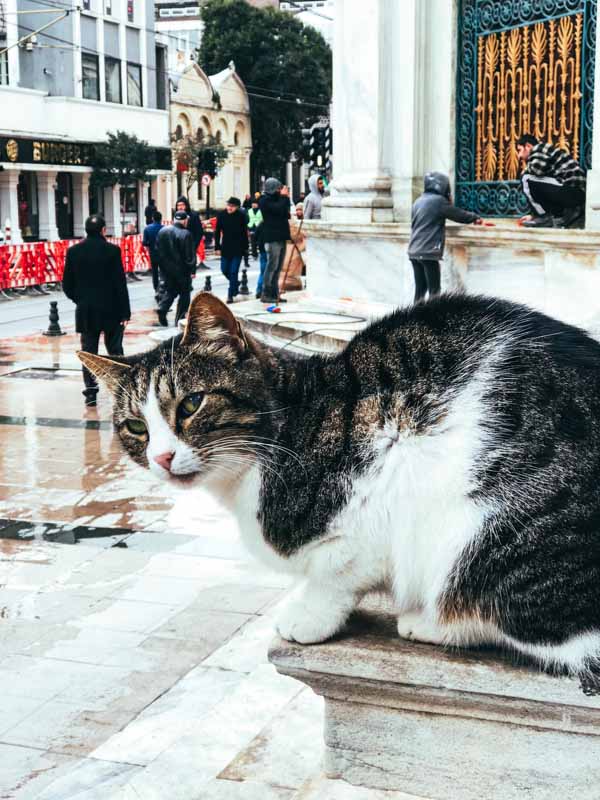
Turkish law – long before domestic animals are no longer considered furniture – protects the rights of “ landless pets ” and builds them shelters with food for winter. Of course this semi-wild population has to be regulate, by means of sterilization campaigns. All this has a cost, but the kedi – cat in Turkish – make it look good, if only because of the notoriety they bring to the city.
Tombili from the block
Who remembers Tombili, the cat who died in 2016, the star of its neighborhood, the Pasha Caïd who fell on the sidewalks, scrutinizing his territory ?
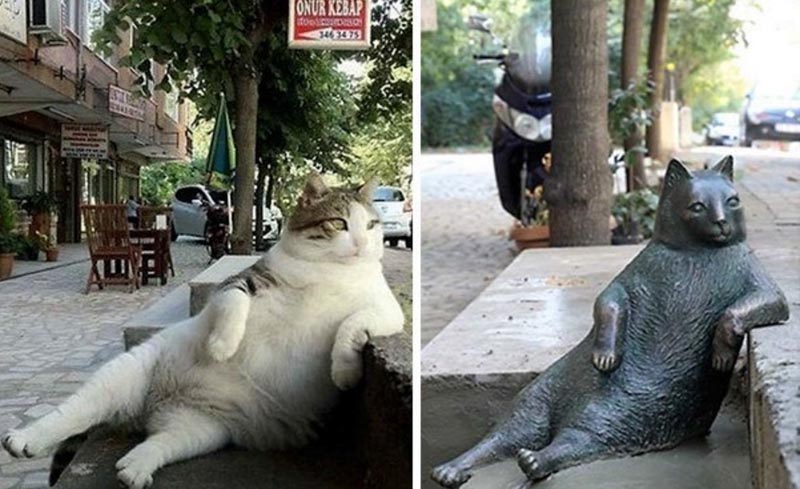
Tombili and its effigy statue in hits neighborhood in Kadiköy, impasse Güleç.
And Gli, the cat of Saint Sophia, whom Obama stroked, and who regularly takes the pose for tourists ?

Having taken up residence in one of the most buildings in the world nearly 14 years ago, its green eyes and silhouette are part of the attraction of the site.
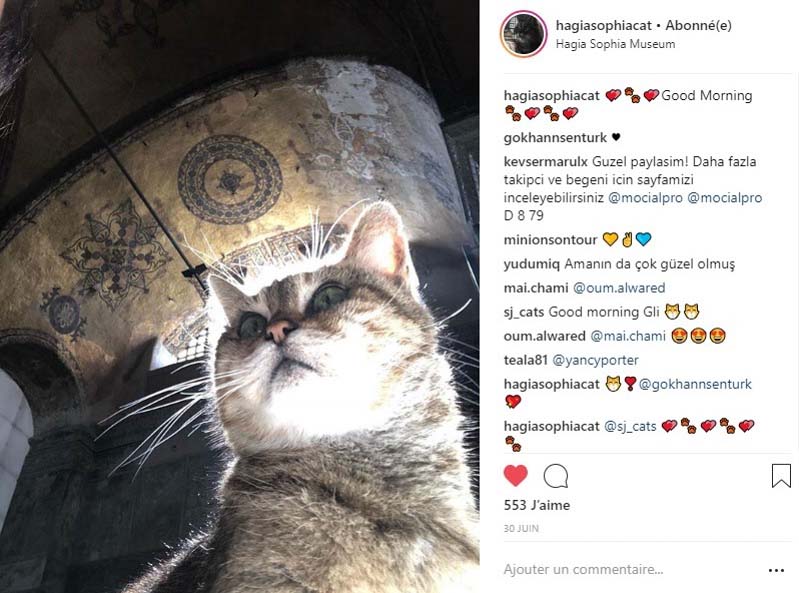
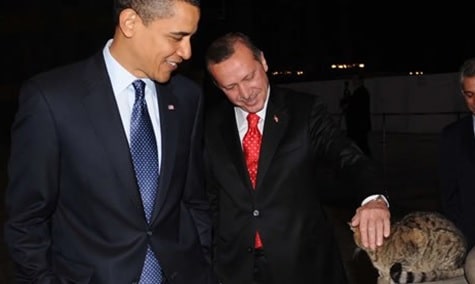
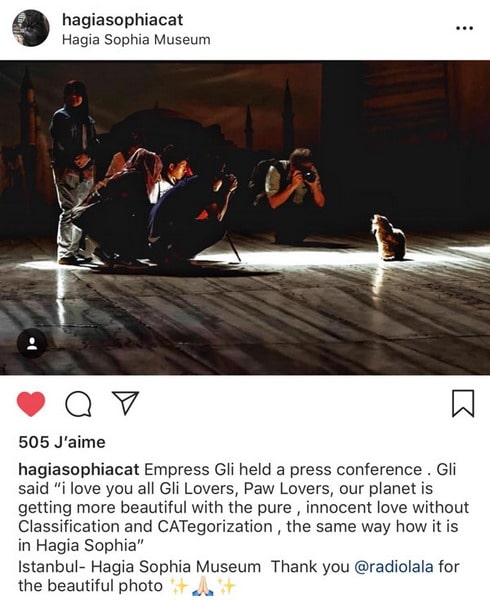
Gli in press conference.
The cats of Istanbul have become one of the cultural symbols of the city and vectors of social bonds in the neighborhoods.
To illustrate their different characters, ways and lifestyles, Turkish cinema even created its anti hero, Serafettin the « bad cat » alias Chero.
Adapted from a comic book, he's dirty, swears, insults his owner, kills, drinks … Very very far from Disney (keep the kids away !), but funny. He sows disasters. Dogs run away when they see him. His buddies are a seagull, a rat and of course the other cats in the neighborhood.
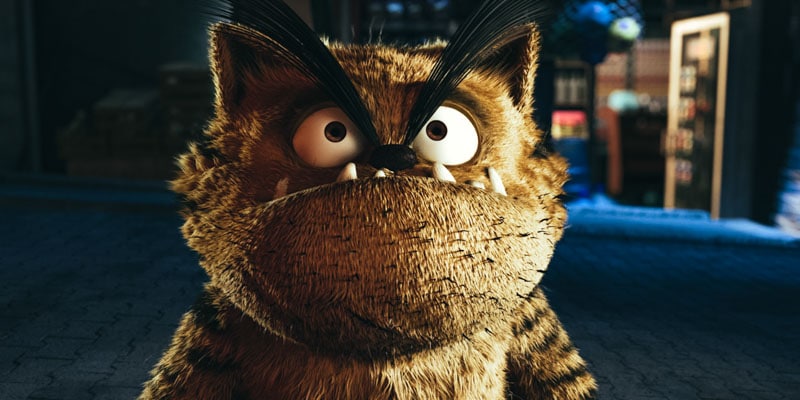
« Your tune is even worse than Eurovision »
« Looks like a Chihuahua fucked by a St Bernard »
« You drained all the booze ! »
« It’s the end of your 9th life ! »
The film documentary Kedi, released in 2017, aims to represent the special bond that binds cats to the city through 7 cats.
What it tells us about the stambouliotes
Beyond the anecdotal side, the way of life and the health of these cats (one is far from the old mangy cats with a flat eye digging in a garbage can) allow to better understand the stambouliotes.
They respect the cat for its uniqueness, its freedom – you don’t choose a cat, it chooses you – its independence, its refinement, its cleanliness. The manner in which they take care of them collectively, without any notion of individual belonging, demonstrates their generosity, sensitivity and respect for these felines who steal the fish, spill the bags of grain on the markets, but they also cajole the lonely souls bruised by life, amuse the merchants, and wait faithfully for the sinner to return to the dock.
I love this city’s love for its cats, which makes it more sensitive, affectionate, endearing, tolerant and caring.
The Cut published an article about the movie which translate what is the real positive impact of cats in men in Istanbul :
The Wonderful Cat Guys of Kedi Are an Antidote to All the Bad Men in the World
Kedi is a film about cats, but it’s also a film about love — an egoless kind of love that doesn’t try to exert control or demand reciprocity, but simply takes joy in the existence of another creature.
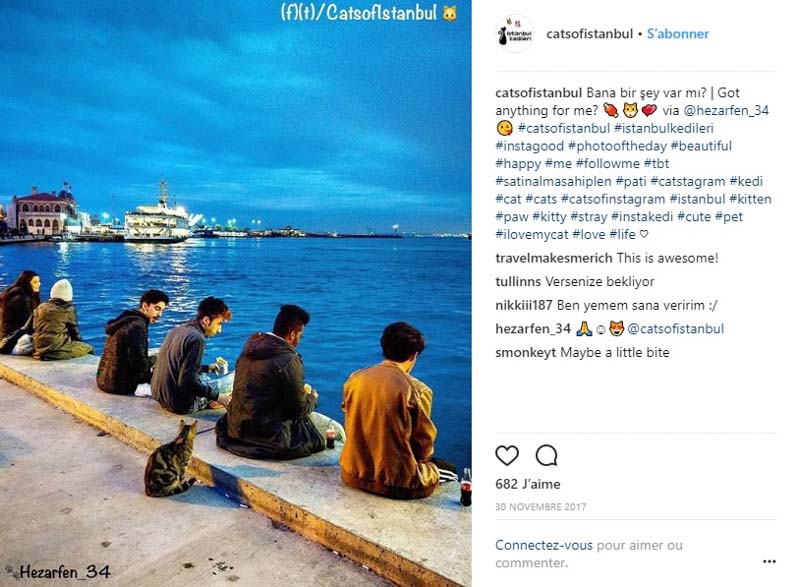
" Smells like tuna fish, doesn’t it?! "
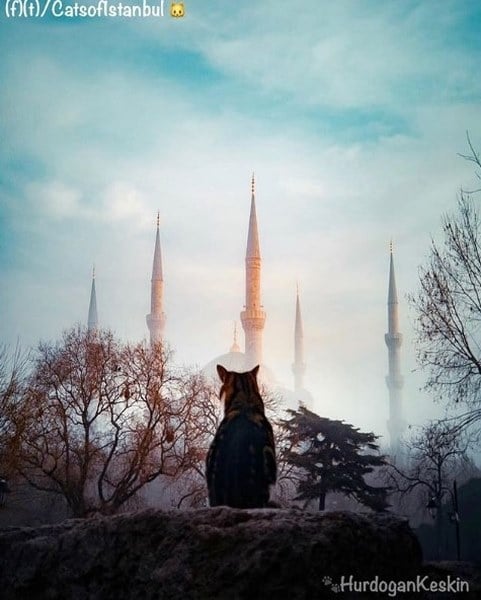
#StreetCatsIstanbul #catsofistanbul

